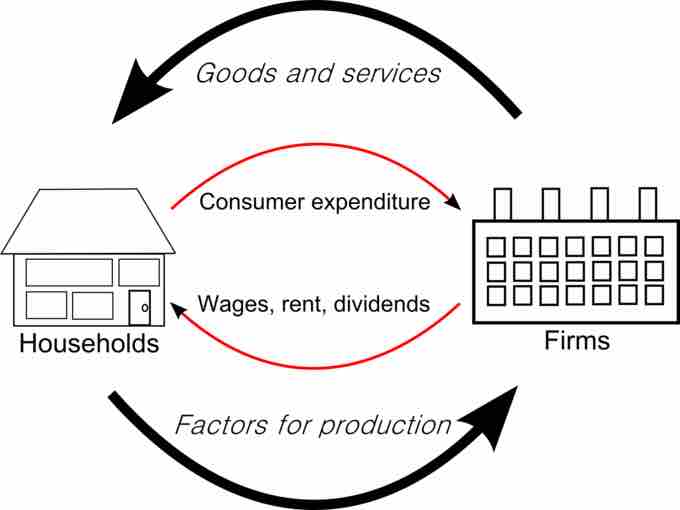In the most basic economic model, the economy consists of interactions between households, which provide labor and purchase goods, and firms, which employ labor and produce goods . Macroeconomics studies the aggregate effects of the actions of many individual households and firms. While microeconomists might study how a market with one producer and one consumer reaches equilibrium, macroeconomists combine the demand of all consumers in a market (aggregate demand) and the supply from all producers in a market (aggregate supply) to look at the way these groups interact on a large scale.

Circular Flow
The economy consists of interactions between firms and households.
Consider the market for CDs. Each individual consumer has a demand function for CDs that determines how many he will buy at a particular price - for example, one consumer may only buy a single album if they cost $15 each, but would buy two if the price dropped to $10 each. Likewise, each producer has a production function that determines how many CDs it will produce at a given price; it may produce 10,000 CDs if they can be sold for $10, but will increase production to 12,000 if the price rises to $15. In order to understand the entire market for CDs, economists add the demand of all consumers at each possible price, creating an aggregate demand curve, and the total quantity supplied by producers at each possible price, creating an aggregate supply curve. The point at which these two curves intersect shows the market equilibrium for CDs.
The Macroeconomy
Just as the choices made by individual consumers and producers can be aggregated to describe an entire industry, their combined effects can also influence a nation's overall economic activity. Macroeconomists study a variety of these effects, but three are central to macroeconomic research:
- Gross domestic product (GDP) - the size of an entire economy's output - is measured by adding together all the production undertaken by a nation's firms. Individual firms affect GDP every time they choose to produce more or less. Consumers affect GDP whenever they increase or decrease demand for goods.
- Inflation occurs when many individual consumers increase demand for a good, raising the equilibrium price for the economy as a whole.
- Unemployment rises when firms choose to produce less or when consumers decrease their demand at a given price.